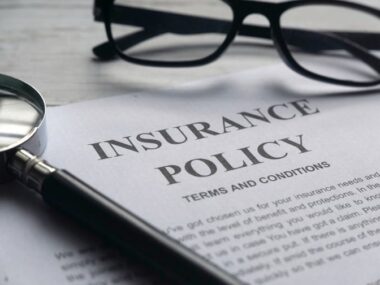Product liability insurance in Australia is essential for businesses to mitigate the financial risks associated with product-related claims. This insurance covers legal costs and compensation for injuries or damages caused by products a company manufactures, sells or distributes.
Given the increasing consumer awareness and litigious environment, having robust product liability insurance is not just a precaution but a critical aspect of business risk management. It ensures that even in the event of a claim, a business can continue operating without facing financial ruin.
The types of product liability insurance available in Australia cater to different business needs. Comprehensive product liability insurance provides broad coverage for all products a company deals with, while limited product liability insurance focuses on specific high-risk items.
Additionally, vendor’s product liability insurance protects businesses that sell products made by others. Each type of insurance serves a unique purpose, allowing businesses to tailor their coverage based on their risk profile and operational scope.
Several prominent insurance providers in Australia, such as Allianz, QBE and NRMA, offer tailored product liability insurance solutions. These companies provide comprehensive coverage options and are known for their strong customer support and risk management services.
By choosing the right insurance provider, businesses can secure coverage that aligns with their needs and industry requirements, ensuring they are well-prepared to handle any product-related claims that may arise.
Types of Product Liability Insurance
1. Comprehensive Product Liability Insurance
This is the most common form of product liability insurance in Australia. It covers all products a company manufactures, sells or distributes. It ensures that any claim related to any product, regardless of the product’s nature, is covered under the policy.
2. Limited Product Liability Insurance
This type of insurance is tailored for specific products or product lines. If a business deals in various products, they might choose to insure only the ones that pose a higher risk. This option can be cost-effective but requires careful risk assessment.
3. Vendor’s Product Liability Insurance
This is ideal for businesses that sell or distribute products manufactured by others. It protects vendors against claims related to products they sell but do not produce. This type of insurance is particularly beneficial for retailers and wholesalers.
How Does Product Liability Insurance Work?
Product liability insurance in Australia works by covering the legal costs and compensation claims if a product causes injury or damage. When a claim is made, the insurer steps in to manage the legal defense and any settlement or compensation required.
The Process:
- Incident Occurrence: An incident occurs where a product causes injury or damage.
- Claim Filing: The affected party files a claim against the business.
- Insurance Notification: The business notifies its insurance provider about the claim.
- Assessment: The insurance provider assesses the claim’s validity and extent.
- Legal Defense: If the claim is valid, the insurer covers the legal defense costs.
- Compensation: If the business is found liable, the insurer pays the compensation amount, up to the policy limit.
Criteria for Product Liability Insurance
1. Business Nature and Size
Insurers consider the type of products a business deals with and its size. High-risk products, like electronics or medical devices, might have higher premiums.
2. Product History
A history of product recalls or past claims can affect insurance rates. Companies with a clean track record might enjoy lower premiums.
3. Distribution Channels
How and where products are sold also impact the insurance criteria. International sales or complex distribution networks might require more comprehensive coverage.
4. Risk Management Practices
Businesses with robust risk management and quality control practices might benefit from lower premiums. Demonstrating proactive safety measures can positively influence insurance terms.
Application Process for Product Liability Insurance
1. Assessment of Needs
Businesses must first assess their coverage needs. This involves evaluating potential risks, the nature of products and the extent of coverage required.
2. Choosing an Insurance Provider
Selecting the right provider is crucial. Businesses should compare offerings, check reputations and consider the provider’s experience in the industry.
3. Documentation Preparation
Prepare necessary documents, including business details, product information, risk management practices and previous claims history.
4. Application Submission
Submit the application with all required documents. Some insurers might require additional information or site visits.
5. Policy Customization and Approval
Insurers review the application, assess the risk and customize the policy. Once terms are agreed upon, the policy is issued.
Benefits of Product Liability Insurance
1. Financial Protection
The primary benefit is financial protection against legal costs and compensation claims. Without insurance, these costs can be crippling for a business.
2. Business Continuity
Product liability insurance ensures that a business can continue operating even in the face of lawsuits. It provides stability and peace of mind.
3. Reputation Management
Handling claims professionally and efficiently helps maintain a business’s reputation. Insurance support ensures that claims are managed without damaging public perception.
4. Legal Compliance
In some industries, product liability insurance is a legal requirement. Having the right coverage ensures compliance with regulations.
Companies Offering Product Liability Insurance in Australia
1. NRMA Insurance
NRMA offers comprehensive product liability insurance tailored to various industries. Known for its customer service and tailored policies, NRMA is a trusted name in the insurance sector.
2. Allianz
Allianz is a global insurance provider with a strong presence in Australia. They offer extensive product liability insurance, with customizable options to suit different business needs.
3. QBE Insurance
QBE is another major player in the Australian market, offering robust product liability insurance solutions. They are known for their risk management support and extensive coverage options.
4. IAG (Insurance Australia Group)
IAG offers product liability insurance under several brands, including CGU and NRMA. They provide tailored solutions with a focus on risk management and customer support.
5. AIG (American International Group)
AIG provides product liability insurance with a global reach, making it suitable for businesses involved in international trade. Their policies are comprehensive and designed to cater to diverse industries.
Real-Life Example:
Consider a small Australian business that manufactures baby products. Despite rigorous quality checks, a faulty batch of baby carriers leads to a few injuries. Parents file claims and the company faces significant legal challenges. With product liability insurance, the business can cover legal fees and compensation, ensuring it doesn’t face financial ruin. The insurer also helps manage the claims process, protecting the company’s reputation and allowing it to continue operations with minimal disruption.
Why Product Liability Insurance is Non-Negotiable
In today’s world, consumers are more aware of their rights and more likely to seek compensation for faulty products. Product liability insurance in Australia is not just a safeguard; it’s an essential aspect of business risk management. Without it, even a single claim can lead to financial disaster.
Mitigating Risks: Best Practices
1. Quality Control
Implementing stringent quality control measures can significantly reduce the risk of product-related claims. Regular testing, inspections and compliance with industry standards are crucial.
2. Transparent Communication
Clear communication with consumers about product use, risks and safety measures can prevent misuse and subsequent claims.
3. Documentation
Maintaining detailed records of product design, testing and manufacturing processes can provide valuable evidence in case of a claim.
4. Continuous Improvement
Regularly reviewing and updating products based on feedback and new safety standards can help mitigate risks.
The Future of Product Liability Insurance in Australia
With advancements in technology and increasing regulatory standards, the landscape of product liability insurance in Australia is evolving. Insurers are developing more sophisticated products, incorporating new risk assessment tools and offering tailored solutions to meet the diverse needs of businesses.
Product liability insurance in Australia is an indispensable part of any business strategy. It provides essential protection against the financial and reputational risks associated with product-related claims. By understanding the types, application process, benefits and the companies offering these services, businesses can make informed decisions to safeguard their operations. As the market continues to evolve, staying informed and proactive in risk management will ensure that businesses remain resilient and competitive.



